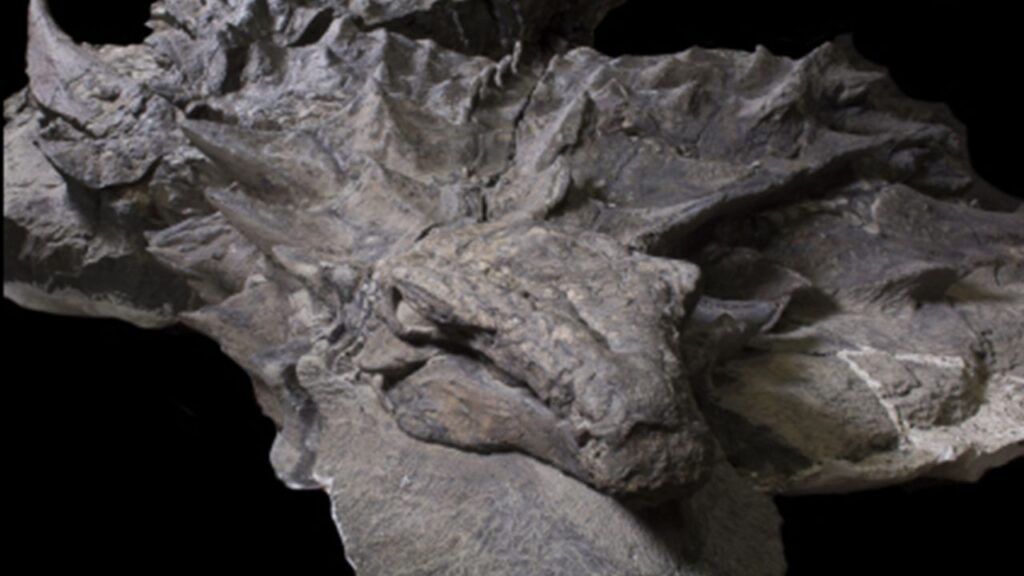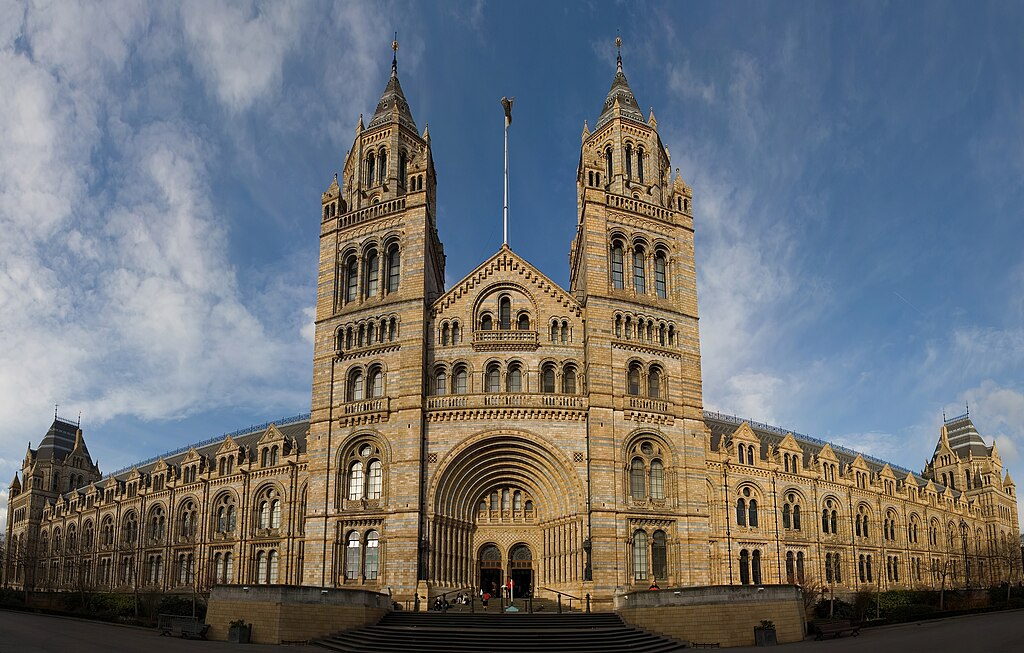In the rugged terrains of Madagascar around 70 million years ago, a peculiar dinosaur roamed the landscape, sporting one of the most unusual dental arrangements in dinosaur history. Masiakasaurus knopfleri, named partly after musician Mark Knopfler of Dire Straits, has captivated paleontologists since its discovery in the late 1990s. This small theropod dinosaur’s most distinctive feature—its forward-pointing front teeth—represents a fascinating evolutionary adaptation that continues to intrigue scientists today. As we explore this unique prehistoric creature, we’ll uncover not just its unusual dentition but also its habitat, hunting strategies, and the significant role it plays in our understanding of dinosaur evolution on isolated landmasses.
Discovery and Naming of Masiakasaurus

Masiakasaurus was first discovered in 1996 during an expedition to Madagascar led by paleontologists from the State University of New York at Stony Brook. The scientific team unearthed fragmentary remains, including distinctive jaw bones and teeth, in the Mahajanga Basin of northwestern Madagascar. Formally described in 2001, the dinosaur received its scientific name Masiakasaurus knopfleri, combining the Malagasy word “masiaka” meaning “vicious” or “fierce” with the Greek “sauros” meaning “lizard.” The species name honors Mark Knopfler, lead guitarist of the rock band Dire Straits, whose music reportedly played during the excavation work that led to the discovery. This naming convention highlights the sometimes playful approach scientists take when christening newly discovered species, while still honoring the creature’s distinctive predatory characteristics.
Geological Timeline and Evolutionary Context

Masiakasaurus lived during the Late Cretaceous period, approximately 70-65 million years ago, just before the mass extinction event that wiped out non-avian dinosaurs. This places it in the final chapter of dinosaur dominance on Earth, during a time when dinosaur evolution had produced immense diversity across different landmasses. The dinosaur belongs to the Noasauridae family within the larger Ceratosauria group, making it a distant relative of larger theropods like Ceratosaurus. Madagascar had already been isolated from other landmasses for tens of millions of years by this time, creating the perfect conditions for unique evolutionary developments like those seen in Masiakasaurus. This isolation explains why Madagascar developed distinctive dinosaur species that evolved separately from their mainland counterparts, following unique evolutionary trajectories shaped by the island’s specific environmental conditions.
The Remarkable Forward-Pointing Teeth
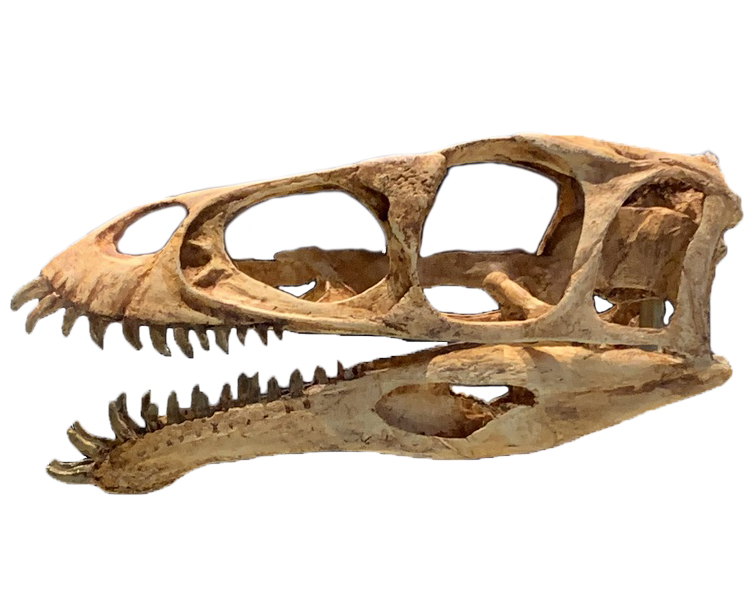
The most striking feature of Masiakasaurus is undoubtedly its highly specialized dentition, particularly the forward-projecting front teeth in its lower jaw. Unlike the vertical teeth commonly seen in other theropod dinosaurs, these procumbent teeth angled outward at nearly 45 degrees from the jawbone, creating an appearance somewhat reminiscent of modern crocodiles. The front teeth were also more conical and needle-like compared to the more blade-like posterior teeth, suggesting a specialized feeding strategy. This heterodontia—having different types of teeth in different parts of the jaw—is relatively uncommon among theropod dinosaurs, which typically possess uniform, serrated teeth designed for slicing flesh. Paleontologists believe this dental adaptation allowed Masiakasaurus to employ specialized hunting techniques that set it apart from other small predators of its time, potentially giving it access to prey resources that other dinosaurs couldn’t effectively exploit.
Physical Characteristics and Size
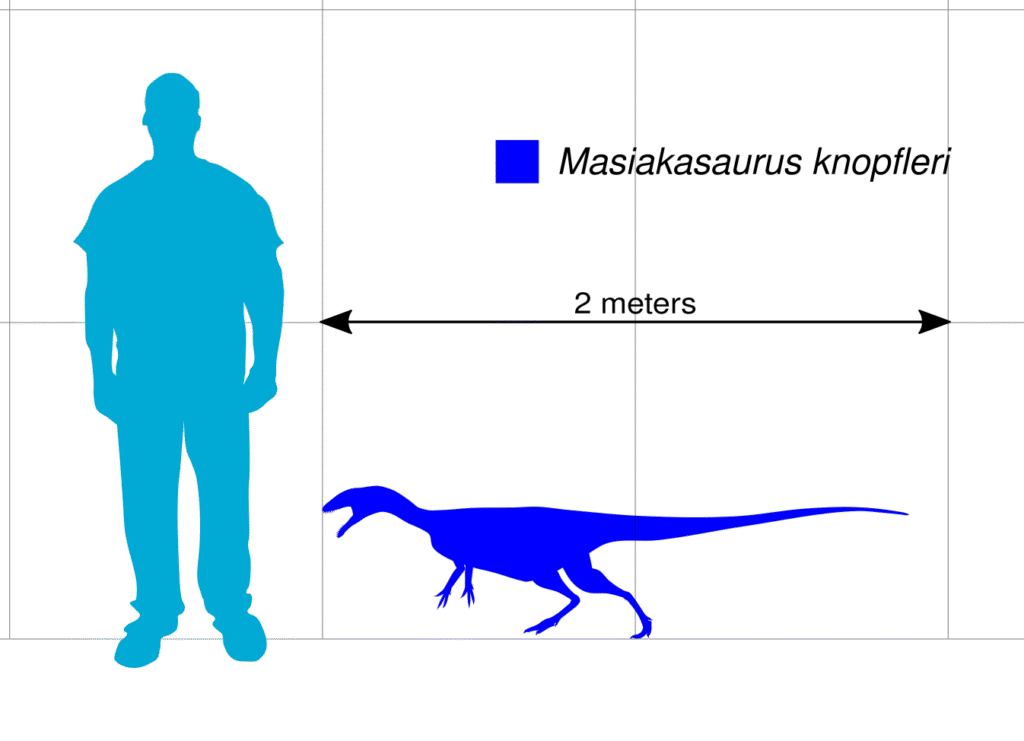
Masiakasaurus was a relatively small dinosaur by Cretaceous standards, measuring approximately 1.8 to 2 meters (6 to 6.5 feet) in length and standing about waist-high to an average human. Weight estimates suggest it was a slender animal of roughly 20-25 kilograms (44-55 pounds), making it a lightweight among predatory dinosaurs. Beyond its unusual teeth, Masiakasaurus possessed other typical theropod features, including bipedal stance, three-fingered hands with sharp claws, and a long counterbalancing tail. Its hind limbs were well-developed for running, suggesting it was a swift and agile predator capable of chasing down prey. The overall body plan indicates it was built for speed rather than power, with adaptations suggesting it occupied a different ecological niche than the larger predators of its environment, focusing on smaller, perhaps more elusive prey items that required specialized hunting techniques.
Hunting Strategies and Diet
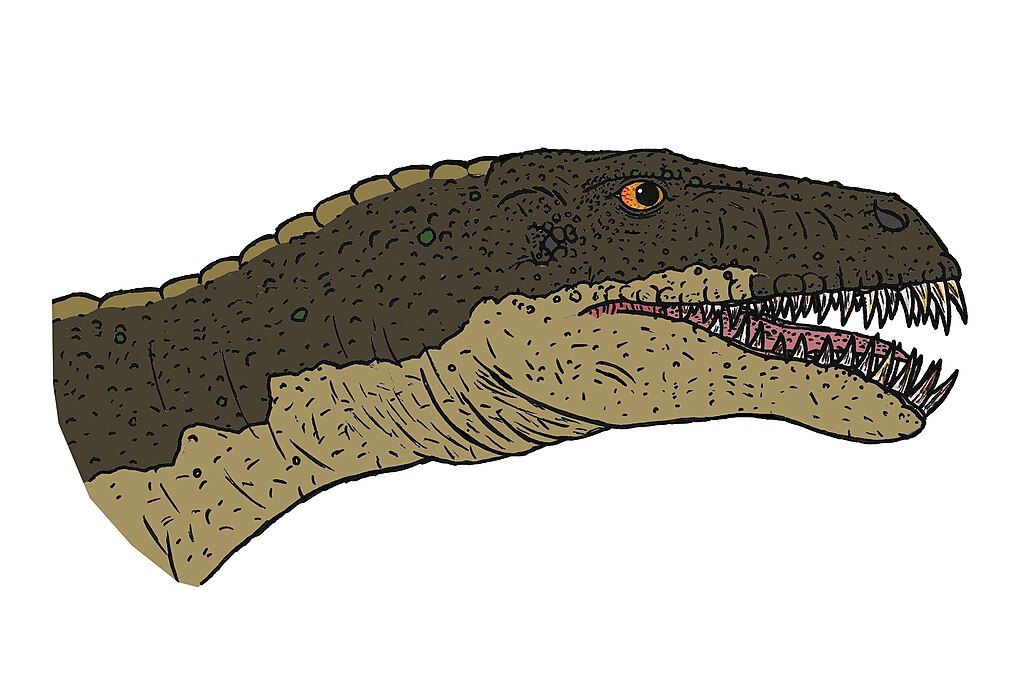
The forward-pointing teeth of Masiakasaurus have led paleontologists to develop several theories about its feeding habits and hunting strategies. The most widely accepted hypothesis suggests these specialized teeth were adaptations for catching and holding slippery prey like fish, frogs, or small reptiles. The procumbent teeth would have functioned somewhat like a fishing spear or tongs, allowing the dinosaur to precisely grab and secure wriggling prey that might otherwise escape. Other researchers have proposed that these teeth might have been useful for probing into crevices or burrows to extract hidden animals, similar to how some modern birds use their beaks. Stable isotope analyses of Masiakasaurus teeth have provided evidence supporting a varied diet, potentially including both terrestrial and aquatic prey sources, indicating it was likely an opportunistic predator. This dietary flexibility would have been advantageous in Madagascar’s seasonal environments, allowing the dinosaur to switch food sources as availability changed throughout the year.
Habitat and Environment in Late Cretaceous Madagascar
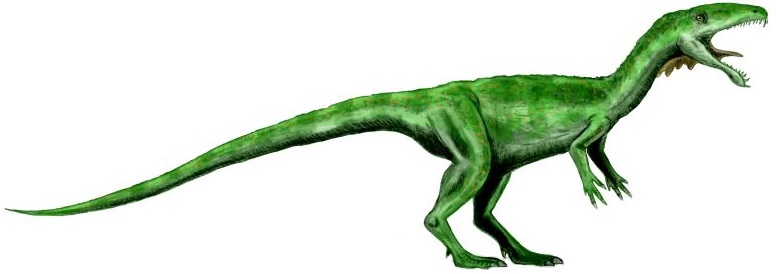
During the Late Cretaceous period, Madagascar was already an island, having separated from the Indian subcontinent approximately 88 million years ago. The environment Masiakasaurus inhabited was significantly different from the Madagascar we know today, characterized by seasonal, semi-arid conditions with distinct wet and dry periods. Paleoenvironmental reconstructions based on sedimentary evidence suggest a landscape dominated by forests along waterways with more open areas in between, somewhat similar to modern African savannas but with different flora. Rivers and streams would have provided habitats for the aquatic prey that Masiakasaurus might have hunted with its specialized teeth. The climate was likely warmer than today’s Madagascar, consistent with the generally warmer global temperatures of the Late Cretaceous world. These environmental conditions shaped the evolution of Madagascar’s unique dinosaur fauna, including Masiakasaurus, as they adapted to the island’s specific ecological niches and resources.
Contemporary Dinosaurs and Ecosystem

Masiakasaurus shared its island ecosystem with several other notable dinosaur species, creating a complex web of ecological relationships. Among its contemporaries was Majungasaurus, a much larger abelisaurid theropod that likely occupied the apex predator niche in this ecosystem. Rapetosaurus, a titanosaur sauropod, represented the large herbivore component of the fauna, browsing on high vegetation with its long neck. Other creatures inhabiting this ecosystem included primitive birds, crocodilians, turtles, and various small mammals. The isolation of Madagascar had led to the development of a relatively limited but specialized dinosaur community compared to continental landmasses. This insular ecosystem likely featured different competitive pressures and predator-prey relationships than contemporary mainland dinosaur communities, with species like Masiakasaurus evolving to exploit specific niches available in this isolated environment. The resulting community showed evolutionary adaptations to maximize resource utilization in what was essentially an island laboratory of evolution.
Skeletal Finds and Fossil Record

The fossil record of Masiakasaurus is more substantial than many other dinosaur species, with approximately 40% of its skeleton recovered across multiple specimens discovered since the late 1990s. Initial discoveries included primarily jaw material that highlighted the unusual dentition, but subsequent expeditions have recovered vertebrae, limb bones, and portions of the pelvis and shoulder girdle. These combined findings have allowed paleontologists to develop a reasonably accurate reconstruction of the animal’s overall appearance and proportions. The preservation quality of the fossils varies, but many show excellent detail, allowing for close study of bone microstructure and growth patterns. Most Masiakasaurus specimens have been recovered from the Maevarano Formation in northwestern Madagascar, an area that has yielded numerous important vertebrate fossils from the Late Cretaceous period. The relatively abundant fossil material has made Masiakasaurus one of the better-understood small theropods from the Southern Hemisphere, providing important data points for understanding dinosaur evolution on isolated landmasses.
Growth Patterns and Life History

Studies of Masiakasaurus bone histology—the microscopic structure of its fossilized bones—have provided fascinating insights into how this dinosaur grew and developed throughout its life. Analysis of growth rings in Masiakasaurus bones suggests it reached skeletal maturity in approximately 8-10 years, a relatively fast growth rate for a dinosaur of its size. Interestingly, research has revealed that the distinctive forward-pointing teeth became more pronounced as individuals matured, suggesting this feature may have become increasingly important in adult feeding strategies. Some specimens show evidence of a growth plateau, indicating these individuals had reached their full size, while others display the rapid growth characteristic of juveniles. The varied ages of recovered specimens have allowed paleontologists to construct a growth series for Masiakasaurus, showing how its body proportions and features changed through different life stages. This detailed understanding of life history is relatively rare for dinosaur species and has made Masiakasaurus an important case study for understanding dinosaur growth patterns more broadly.
Evolutionary Significance and Adaptations
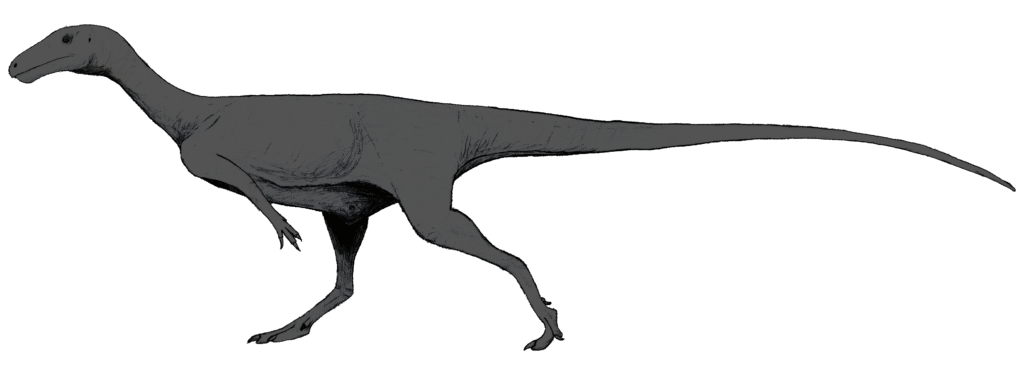
Masiakasaurus represents a remarkable example of evolutionary adaptation to a specific ecological niche, showcasing how isolation on Madagascar drove unique specializations. As a member of the Noasauridae family, it helps scientists understand the diversity of smaller ceratosaurian theropods, a group that remains relatively poorly known compared to some other dinosaur lineages. The specialized dentition of Masiakasaurus likely evolved in response to specific prey resources available in its environment, demonstrating the principle of adaptive radiation in action. Studying such specialized adaptations provides valuable insights into the evolutionary pressures that shaped dinosaur diversity during the Late Cretaceous period. The case of Masiakasaurus also highlights the importance of island biogeography in evolution, showing how geographic isolation can accelerate the development of novel traits and specialized adaptations. This principle—that islands often serve as natural laboratories for evolution—is exemplified not just by Masiakasaurus but by Madagascar’s entire unique dinosaur assemblage, which evolved distinctly from mainland dinosaur communities.
Paleontological Techniques Used in Study

The study of Masiakasaurus has benefited from a range of modern paleontological techniques that have revealed details about its biology impossible to discern from simple observation of fossils. CT scanning has allowed scientists to examine the internal structure of Masiakasaurus bones and teeth without damaging the specimens, revealing details about sinus cavities, brain case structure, and tooth replacement patterns. Histological analysis—the microscopic examination of thin sections of fossilized bone—has provided insights into growth rates, age at death, and physiological stress periods during the dinosaur’s life. Geochemical analyses of tooth enamel, including stable isotope studies, have offered clues about diet and habitat preferences by examining the chemical signatures preserved in the fossilized tissues. Comparative anatomical studies placing Masiakasaurus features in context with related species have helped establish its evolutionary relationships and highlight its unique adaptations. These multidisciplinary approaches represent the cutting edge of modern paleontology, transforming our understanding of extinct animals from static skeletons to dynamic living creatures with complex life histories.
Scientific Controversies and Competing Theories
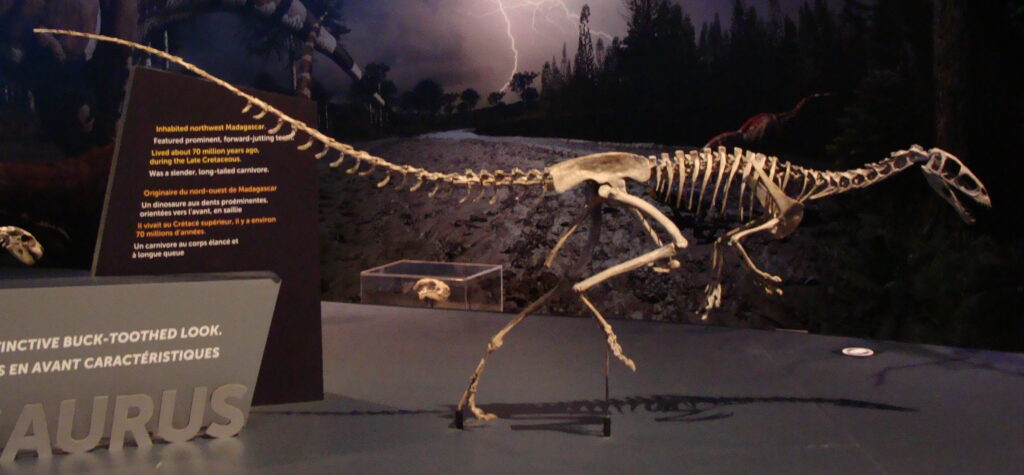
As with many paleontological discoveries, certain aspects of Masiakasaurus biology and lifestyle remain subjects of scientific debate. One ongoing discussion centers on the precise function of the forward-pointing teeth, with some researchers suggesting they were adaptations for fishing, while others propose they might have been used for probing into crevices or even specialized insect consumption. Another debate concerns the locomotor capabilities of Masiakasaurus, with different interpretations of its limb proportions suggesting varying degrees of cursorial (running) adaptation. The taxonomic placement of Masiakasaurus within Noasauridae has also seen refinements as more fossil material has been discovered and analyzed, illustrating how paleontological understanding evolves with new evidence. Some researchers have even questioned whether the unusual dental morphology might represent sexual dimorphism rather than being present in all individuals, though the current evidence suggests it was a species-wide trait. These scientific disagreements highlight the dynamic nature of paleontological research, where interpretations continue to evolve as new specimens are discovered and analytical techniques improve.
Cultural Impact and Public Interest
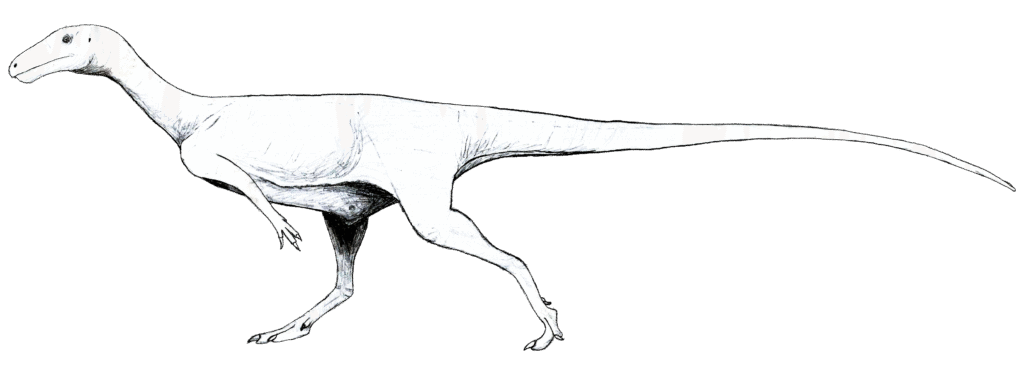
Despite being a relatively recent discovery, Masiakasaurus has captured public imagination due to its bizarre dentition and intriguing name connection to rock music. The dinosaur has been featured in various popular science publications, documentaries about prehistoric life, and museum exhibits focusing on unusual dinosaur adaptations. Its connection to Mark Knopfler and Dire Straits has created an interesting intersection between paleontology and popular culture, occasionally bringing dinosaur science to audiences who might not otherwise engage with the subject. Masiakasaurus has appeared in several dinosaur encyclopedias and educational resources, where it frequently serves as an example of specialized adaptation and island evolution. Museum reconstructions of Masiakasaurus, with its distinctive forward-jutting teeth prominently displayed, have become popular attractions that highlight the diversity of dinosaur forms beyond the typical large predators that dominate public perception. This cultural presence demonstrates how even smaller, less imposing dinosaurs can capture scientific and public interest when they display truly unique evolutionary adaptations.
Significance for Understanding Dinosaur Diversity
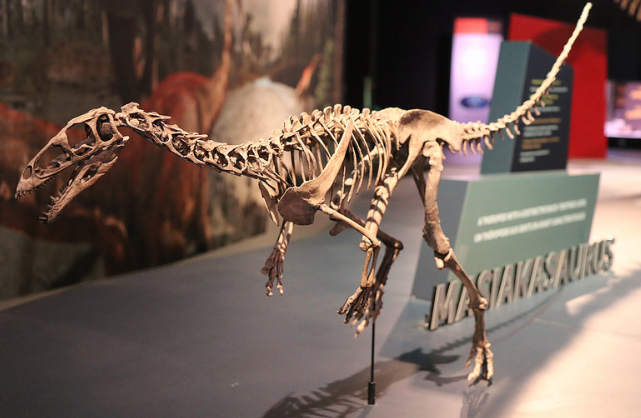
Masiakasaurus stands as a testament to the remarkable diversity that existed among dinosaurs, particularly during the Late Cretaceous period when dinosaur evolution had produced highly specialized forms across different environmental niches. As one of the most unusual theropods discovered to date, it challenges the stereotypical image of dinosaurs and demonstrates the wide range of morphological adaptations that evolved within these animals. The specialized dentition of Masiakasaurus highlights how natural selection can drive the development of highly specific anatomical features in response to particular ecological opportunities. Its existence within Madagascar’s isolated ecosystem provides valuable comparative data for understanding how dinosaur evolution proceeded differently on islands versus continents. By studying such specialized dinosaurs, paleontologists gain insights into the ecological complexity of Mesozoic ecosystems, revealing that dinosaurs occupied much more diverse ecological roles than previously understood. The ongoing discoveries of unusual dinosaurs like Masiakasaurus remind us that our understanding of dinosaur diversity remains incomplete, with potentially many more specialized forms awaiting discovery in the fossil record.
Conclusion
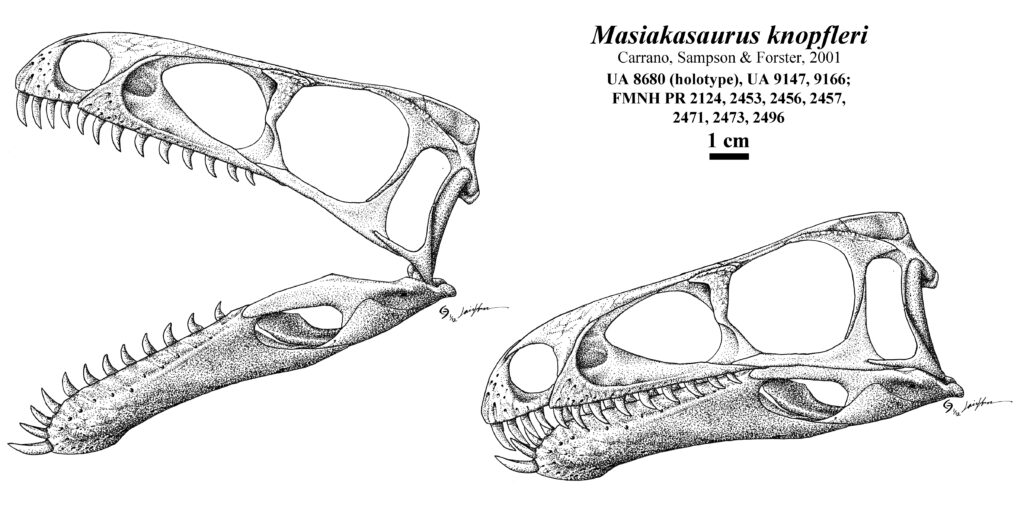
Masiakasaurus knopfleri represents one of paleontology’s most intriguing examples of specialized adaptation in dinosaurs. From its bizarrely forward-pointing teeth to its unique island evolution, this small predator continues to provide valuable insights into how dinosaurs diversified to fill specific ecological niches. As paleontological techniques advance and more specimens are potentially discovered, our understanding of this unusual dinosaur will likely continue to evolve. For now, Masiakasaurus stands as a fascinating reminder that dinosaur evolution produced forms and adaptations far more diverse and specialized than we might ever have imagined, particularly in isolated environments like Madagascar, where evolution followed its unique path.


